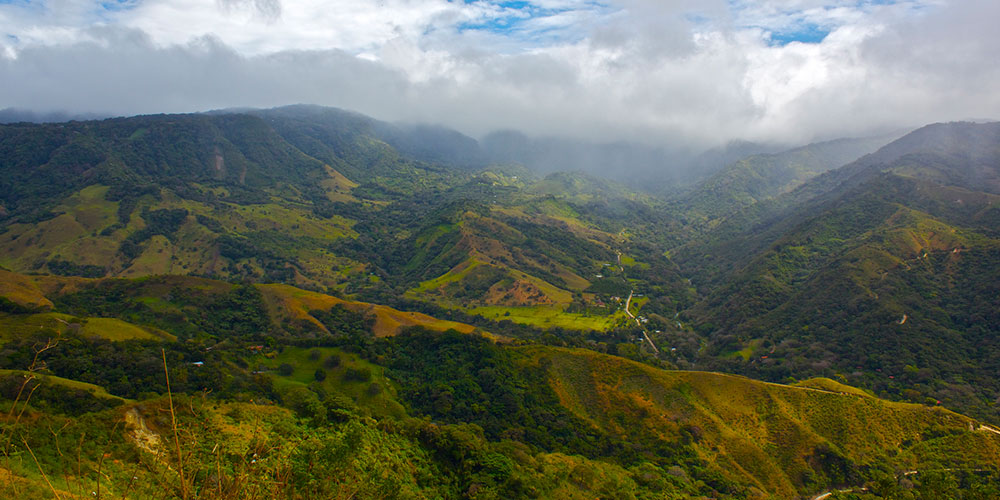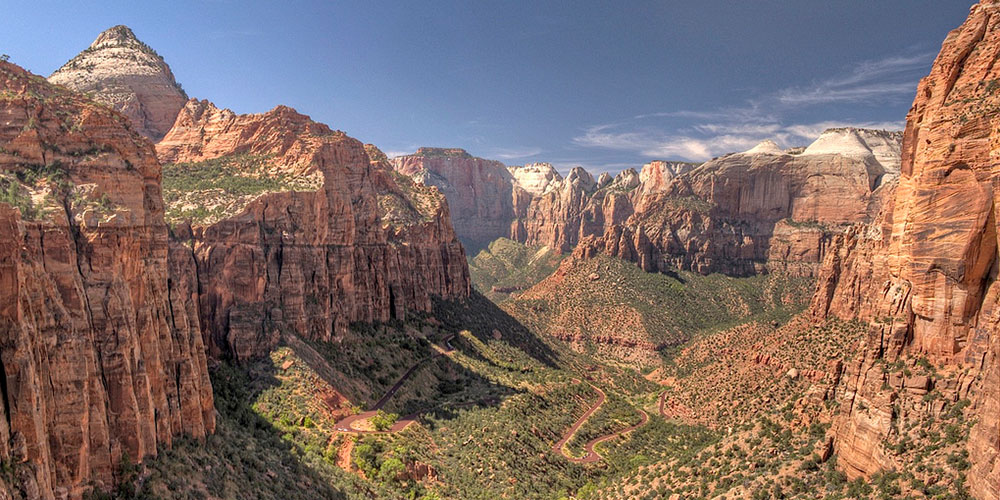Haute Hijab was co-founded by a husband and wife team on a journey to disrupt the fashion ...

Indian writer/director Shonali Bose (director of the internationally renowned film “Amu”) beautifully portrays “Margarita with a Straw“, the story of a luminous Indian teenager with cerebral palsy who leaves her homeland to study in New York, falls in love with a young blind woman, and begins a remarkable journey to self-discovery and independence. Bose was inspired to write this humane story by her cousin’s experience with cerebral palsy.
— — —
Chris Remmers: Let’s start with a little bit about your background. Where did you grow up? What were some of the highlights and beauty of the area? Maybe even a few negatives to shine light on.
SB: I was born in a city called Kolkata, India. Which is a city that Mother Teresa, a famous nun, went to and worked with the poor. Kolkata is one of the most populated cities in the world. I grew up there and became very used to seeing lot of people around me all the time. From a young age, what struck me was poverty and the stark difference between people of different classes. It really hurt me and bothered me always. I wanted to do something about it. Early on, the sense of injustice and wanting to right wrongs has really fueled me as a filmmaker. Just wanting to bring forth things and ideas that people are not necessarily thinking about. After that I lived in a city called Mumbai, which today is the city that produces the largest number of films in the world.
 Photo courtesy | Girish Gopi
Photo courtesy | Girish Gopi
CR: Wow. That’s really inspiring that those inequalities help fuel you as a film maker. I didn’t realize Mumbai produces the most films in the world.
SB: Yes! It’s a very, very exciting city. I moved there as an adolescent when I was 14. You see a star now and then just like in Hollywood, and that was thrilling as a 14 year old. At that point I had do interest at that point in being a film maker. For my undergraduate, I went to New Delhi, which is the capital city of India. This was really the most formative time for myself in growing up and it greatly influenced all of my film making.
There were a couple of experiences I had put in my films “Amu” and “Margarita With a Straw”. So there was a genocide that took place in India in 1984, when I was a first year undergraduate, in which thousands of people were killed from the Sikh community. I went down and worked in the relief camp along with my department. I was a transcriber. I was hearing people’s stories and writing them down. There were people sending postcards to their families. This really stayed with me and it became my first feature film “Amu”. It actually premiered in Berlin and did really well.
 Photo courtesy | Skye Vidur
Photo courtesy | Skye Vidur
Also, in my time as an undergraduate my first love affair was with a woman, she was actually from the university. That was a deep and wonderful relationship. I was very comfortable with my own sexuality, but very fearful of telling other people. I think that also colored my second film. I think my experiences, it’s not just emotional experiences, but just the city as in visually all the city. I feel really comfortable shooting in these cities.
Traveling made me feel very at home in all these cities; New York, [New] Delhi, Mumbai, Kolkata and of course now Los Angeles. It made me much more of a global citizen, always active in struggles. When you’re in big cities like this, you can’t ignore them and they are always around. You want to be a part of so many different movements and struggles. I’ve always been an activist in the city I’ve lived in.
CR: Wow that’s unreal. You have an amazing story. It definitely is safe to say that your upbringing influenced your film-making career. With that being said, how do you feel film and travel fit together in your life?
SB: Film has really influenced the world for me in terms of travel. Not necessarily when I’m shooting or directing, they have made me travel, but it’s the film festivals. We’ve been in 140-film festivals with “Margarita with a Straw”. That’s what has taken me all around the world. It’s fabulous going with a film. I’ve been to Trinidad, Costa Rica, Italy and Africa, pretty much every continent. It’s the language of cinema. It’s such a universal language. It’s such a deep experience that I have had in film and travel. When I go to different cultures and countries, sometimes nobody speaks English and I have translators. The people are just hugging me and are kind. It has been such a moving experience that travel has brought, just seeing how cinema crosses barriers.
 Photo courtesy | The LEAF Project
Photo courtesy | The LEAF Project
CR: That’s absolutely touching, there’s no better way to explore the world than doing what you love for work. It’s absolutely an incredible thing when you have all these people that look up to you and are really inspired by what you do. It’s truly a fulfilling career moment.
SB: I’m so grateful that I’ve been able to explore the world this way, rather than as a tourist.
CR: Of course. With that being said, how special was it for you to direct “Margarita with a Straw”? How do you feel about the finished product? Do you think it was everything you that envisioned going into it?
SB: Much, much more. When I was writing my script I didn’t even dream that it could be what it ended up being. For me, it’s extremely special, probably the most fulfilling of my entire life, because I started working on it four months after my 16-year-old son’s death. I started writing it on his 17th birthday. I was able to celebrate that day as a mother. I wrote straight through for 30 days. At the end of the 30 days this was the film pretty much. I just went from a very deep place within me from all aspects, from my own sexuality and experience of a 19-year-old, to my own experience as a mother. I just went deep inside myself. I don’t know if I can do that again. It was just so freeing.
 Photo courtesy | Marcela
Photo courtesy | Marcela
CR: I firmly believe if you put your heart and soul into something, and you believe in something that much, it will translate to other people and they will see your passion. That’s what brings people out and inspires people. Why was important to shed light on the struggles of the LGBT community in a real, authentic way? How did you keep it as authentic as possible during a shooting?
SB: It’s technically illegal to be gay in our country. We were shooting in NY when the Supreme Court supported [gay] marriage across the country and now every state in America has it. At the time I was making the film, this was a burning issue all over the globe. First, why should sexuality be domain of the law and be discriminated against. I feel really strongly about it. It’s a huge part of the world to have that fight. There’s no question as to why that’s important.
READ MORE: Travel Profile: Margarita with a Straw — Kalki Koechlin
I was very nervous about shooting the love scenes between the girls and so were they. I tried to see what works with them. I made them comfortable with their own bodies and with each other. In fact, when we were working together, learning to touch and taking off clothes, even I did to make them comfortable. Nudity was a hard one in fact, it was the first scene. We felt comfortable after we did that on set, because there is more people. I tried to not keep a lot of people, but you need four of five people for cameramen and other things.
She is a strong woman, but still when they have to take off their clothes, they are uncomfortable. The first time we were shooting nudity was in the changing room of the swimming pool, and she had to take off her top. They were really shy, so as I’m directing I took off my own clothes so they could be fearless. Also, to send the message that you’re not only being watched, you’re not vulnerable in your nudity. I’m directing the scene and I’m nude. I think that’s a great tool for them.
CR: That is the prime example if I’ve ever heard one of “lead by example.” That is truly amazing to take that step and make your cast feel that comfortable. That’s something you don’t get very often. It’s a passion that’s very rare and amazing that you hold that. Switching gears a bit, when you’re going away do you prefer going to a secluded beach? Or would you prefer to be in the city seeing the sights? What kind of traveler are you?
SB: I would prefer to go to a secluded nature area. I love nature – the mountains or the ocean. I love both. I guess, because I live in these vibrant cities I like to get away. For instance, when I was at a film festival in Spain, I wasn’t so excited about being in Madrid and Barcelona. I like just going into little remote places. I would much prefer to be in a secluded beach area just chilling, experiencing the beach and seeing different kinds of nature. The one thing about the [United States] is I love the national parks, but they do get crowded. Just the beauty of the parks is so breathtaking and stunning. I actually drove across the country, when I moved from NY to LA. I just camped along the way and drove across.
 Photo courtesy | John Fowler
Photo courtesy | John Fowler
CR: That’s amazing. I myself am really into nature. I think in today’s world the beauty of it is often overlooked having everyone face down in their screens.
SB: Definitely! I think those are my best experiences with travel, whether it’s hiking or just being outdoors with nature. I can’t live without the big cities. I can’t go and live in the country, but that’s my ideal vacation.
CR: I couldn’t agree with you more. You need some balance of both. Onto our last question. Everyone has a bucket list, if you could film in three places in the world, where would be your top three places and why?
 Photo courtesy | Franco Pecchio
Photo courtesy | Franco Pecchio
SB: Ladakh, which is in the Himalayas. Then, Kenya and Iceland.
CR: Why specifically those last two?
SB: I’ve very spontaneously said this, because I said what come from my heart. I’ve always wanted to go out on a safari and I haven’t done it yet. I feel it would be so amazing to shoot a real story out there in Africa. Ladakh is the only one that I have really thought about which is in the Himalayans and it borders Tibet, China and India. It would be a wonderful place to shoot.
— — —
For more on Shonali Bose and “Margarita with a Straw” visit WolfeOnDemand’s website:
In memory of the Orlando LGBT victims.


Set beachfront, with a picturesque desert backdrop, resides this beautiful property, a sure-fire hit for any vacation.


Dropping travelers right in the heart of New York City, there won't be any case of boredom while staying here!


Nestled quaintly in Cancun's beachfront, only the setting tops the resorts accommodations.


Located within walking distance of the Santa Monica pier, this hotel embodies the Californian lifestyle with class.















